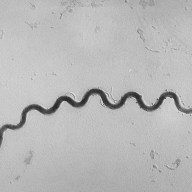 Worried for your health? Vani Hari, also known as the Food Babe, told Metro how to navigate a holiday party and pick the healthiest alcoholic beverages.
Worried for your health? Vani Hari, also known as the Food Babe, told Metro how to navigate a holiday party and pick the healthiest alcoholic beverages.
Credit: Flickr / mountainhiker
Holiday parties are filled with good cheer, friends and of course, plenty of booze. Maybe you’re looking for the cocktail or beer that will do the least damage to your body, but the FDA does not regulate alcoholic beverages, so alcohol companies are not required to label all of the ingredients, making it difficult to see which drinks are healthier than others. Activist and blogger Vani Hari, also known as the Food Babe, talked to Metro about how to pick your poison during the holidays.
Beer: You’d be surprised by the “extras” some manufacturers add to your favorite beers. Hari called individual companies to ask for ingredient lists and found that some beers contain ingredients like corn syrup and caramel coloring. Caramel coloring is known to be carcinogenic. It contains a chemical called 4-methylimidazole, which has been linked to cancer in animals. Hari said beer manufacturers use caramel coloring to give the beers a “deep golden brown” color that is typically achieved by using high quality hops. Newcastle is one brand that uses caramel coloring in its beers.
Hari said some of the mass-produced beers have corn syrup in their ingredients list include Corona, Miller, Coors, Pabst Blue Ribbon and Red Stripe. Heineken, Amstel and Sierra Nevada are a few popular brands that do not use genetically modified ingredients or other unsavory additives. Even so, Hari recommended seeking out beers from local microbreweries first. “Those smaller breweries are generally not using the crazy additives that other companies use to save money or produce faster,” she said.
Wine: Not all wines are created equal. Hari said some wines are produced with poor quality grapes and can include preservatives, additives and sulfites. Sulfites have been linked with allergic reactions and asthma. Hari suggested buying organic wines, which eliminate exposure to pesticides and other additives. She likes drinking biodynamic wines by Frey and Robert Sinskey. “They take it up another notch by making wines that are biodynamic,” said Hari. “You’re not just drinking organic wine, but wine that’s also environmentally friendly.”
Hard alcohol: Again, Hari urged consumers to buy organic hard alcohol, as it’s impossible to simply check an ingredients label for additives. “You’re also not going to have genetically engineered corn or soy in the organic versions of liquors,” said Hari.
Hari said your best bet is to go for the simplest spirits – flavored ones may contain artificial or natural flavors that can include a range of substances, including castoreum, which is sometimes derived from beavers’ anal glands. Agave plants are not sprayed with pesticides as much as other plants, thus agave-derived liquors like 100 percent agave tequila (Patron is one brand) are “very clean,” according to Hari. As far as navigating cocktails at holiday parties, Hari said it’s best to go for unflavored mixers as well, like soda water or 100 percent juices. “Stay simple,” she said. “Juice is way better for you than pina colada or bloody mary mix. The holidays are a time to have a good time and let loose, so just minimize the damage by trying to pick the best drinks.”
Of course, the healthiest way to go is to avoid drinking when possible. “You don’t have to drink at every holiday party,” said Hari. “If you have five parties in a week, don’t feel like you have to drink at all of them. A club soda with lime on the rocks looks like a vodka tonic so you can blend in.”
Follow Andrea Park on Twitter: @andreapark
Learn more about the Food Babe’s work on her blog.
















